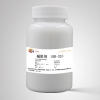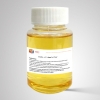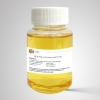Demulsification Mechanism of crude oil demulsifier
The mechanism of crude oil demulsifier is phase transfer-reverse deformation mechanism. After adding demulsifier, phase transition occurs, i.e. surface active agent (reverse demulsifier) can be formed which is contrary to the type of emulsion formed by emulsifier. These demulsifiers interact with hydrophobic emulsifiers to form complexes, thus losing emulsifying properties of emulsifiers. Mechanism of collision breaking film. Under the condition of heating or stirring, demulsifier has many opportunities to collide the interfacial film of emulsion, or to adsorb on the interface membrane, or to exclude some surfactants, thus breaking the boundary film and reducing its stability greatly. Flocculation, coalescence and demulsification occur.
In recent years, the research on Demulsification Mechanism of crude oil emulsion has focused on the fine investigation of droplet coalescence process and the effect of Demulsifier on interfacial rheological properties. However, because the demulsifier's effect on emulsion is very complex, although a lot of research work has been done in this field, there is no unified conclusion on the Demulsification Mechanism at present.
The following several demulsification mechanisms are generally recognized at present: 3) solubilization mechanism. One or a few molecules of demulsifier can form micelles, which can solubilize emulsifier molecules and cause demulsification of emulsified crude oil. (4) The mechanism of fold deformation. Microscopic observation shows that W/O emulsion has two or more layers of water circle, and oil circle is between the two layers of water circle. Under the action of heating stirring and demulsifier, the inner layers of the droplets are interconnected, which makes the droplets condense and demulsify.
In addition, there are some studies on Demulsification Mechanism of O/W emulsified crude oil system in China. It is considered that the ideal demulsifier must have the following conditions: strong surface activity; good wettability; sufficient flocculation capacity; and better coalescence effect.





